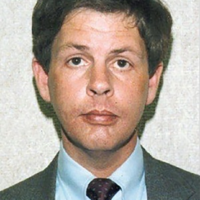When Westfield resident Herb Baumeister died by suicide in 1996, he took with him the knowledge of the horrors that took place at his Fox Hollow Farm estate in the years prior.
Baumeister shot himself after an investigation by law enforcement and an excavation of the wooded area behind his estate on 156th Street performed by the University of Indianapolis Anthropology and Archaeology Department revealed more than 10,000 charred and crushed human remains, ranging from long bones to fragments as small as fingernails. After the discovery, eight victims were identified.

In 2022, the coroner’s office restarted the effort to identify those remains.
“Baumeister shot himself in Canada before police ever had the opportunity to (talk to him), so it is my opinion that Baumeister is as prolific as (Jeffrey) Dahmer and (John Wayne) Gacy,” Hamilton County Coroner Jeff Jellison said. “I think before this investigation is over, the community will understand the magnitude of his acts.”
The charred remains were housed at the University of Indianapolis beginning in 1996. The investigation gained new life when the family of Allen Livingston of Indianapolis, missing since 1993, contacted the coroner to see if there was a possibility that Livingston was one of Baumeister’s victims.
The coroner’s office began an effort to obtain DNA from family members of suspected victims to match them to victim DNA profiles extracted from the remains. That work is conducted by the Indiana State Police Laboratory and Dr. Krista Latham of the Biology & Anthropology Department at the University of Indianapolis.
So far, five additional victims have been revealed. In October 2023, the investigation got its first match to one of those five: Livingston.
“Right now, we have four profiles unmatched to family reference samples,” Jellison said. “So, we know we have four additional victims. Allen Livingston was the ninth, so we know we have 13 victims who have been recovered from Fox Hollow.”
Last month, the remains of Manuel Resendez, who was one of the original eight victims, were also identified through DNA.
DNA profiles from the remains that do not match any family reference samples are entered into CODIS, the national DNA database. Those remains are sent to a private laboratory for further sampling, and then to the FBI.
“I am confident that not everyone who provided us with a family reference sample had a family member who was a victim at Fox Hollow, but I am confident that we will solve cases around the nation as a result of this work,” Jellison said.
The cost of the DNA profiling is not passed on to Hamilton County taxpayers because it is already a service of the ISP. But there is a cost associated with private laboratory testing. To do that, the coroner’s office obtained a federal Sexual Assault Kit Initiative grant.
Jellison said those funds will eventually run out, considering the magnitude of remains left to be examined. At that point, his office intends to explore additional funding options.
All of Baumeister’s known victims went missing in the early- to mid-90s and were last seen at gay bars in the Indianapolis area. Jellison said anyone with missing family members who they believe may have been victims of Baumeister to come forward for a DNA swab.
“They are no longer forgotten. I will not allow that to happen,” Jellison said of the unknown victims. “These are people that were victims of a horrific serial killer. These are families that have waited 30 years and would have waited longer that need closure, that want answers. And I find it absolutely irresponsible that no one in law enforcement in this county or any previous coroner made the effort to identify these people. It’s not only morally irresponsible, it’s ethically irresponsible and they’re derelict in their duties as a coroner who’s statutory responsibility is to identify the deceased.”




